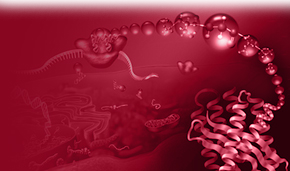|
|

|
|
Science Sparks @ ACTREC
|
 21 June 2021 21 June 2021
|
Vol. No. 10; Issue No. 480 |
|
|
Publications
|
|
1. Swamidas J, Pradhan S, Chopra S, Panda S, Gupta Y, Sood S, Mohanty S, Jain J, Joshi K, Phurailatpam R, Gurram L, Mahantshetty U, Agarwal J (2021). Development and clinical validation of Knowledge-based planning for Volumetric Modulated Arc Therapy of cervical cancer including pelvic and para aortic fields. Physics and Imaging in Radiation Oncology. 18: 61-67.
2. Dholam K, Singh G, Sathaye N, Gurav S, Shinde A (2021). Two-piece oral facial prothesis retained with magnets for a complex maxillary facial defect: A clinical report. The Journal of Prosthetic Dentistry.
3. Mahantshetty U, Gurram L, Bushra S, Ghadi Y, Dheera A, Paul J, Hande V, Chopra S, Ghosh J, Shylasree T S, Popat P, Sable N, Maheswari A, Gupta S (2021). Single application multi-fractionated image guided adaptive High Dose Rate Brachytherapy for Cervical Cancer- Dosimetric & Clinical Outcomes. International Journal of Radiation Oncology Biology and Physics.
4. Chaudhary N, Choudhary BS, Shah SG, Khapare N, Dwivedi N, Gaikwad A, Joshi N, Raichanna J, Basu S, Gurjar M, Smitha PK, Saklani A, Gera P, Ramadwar M, Patil P, Thorat R, Gota V, Dhar SK, Gupta S, Das M, Dalal SN (2021). Lipocalin 2 expression promotes tumor progression and therapy resistance by inhibiting ferroptosis in colorectal cancer. International Journal of Cancer.
|
|
|
|
|
Interesting Reads
|
|
Casanova-Acebes M, Dalla E, Leader AM, LeBerichel J, Nikolic J, Morales BM, Brown M, Chang C, Troncoso L, Chen ST, Sastre-Perona A, Park MD, Tabachnikova A, Dhainaut M, Hamon P, Maier B, Sawai CM, Agulló-Pascual E, Schober M, Brown BD, Reizis B, Marron T, Kenigsberg E, Moussion C, Benaroch P, Aguirre-Ghiso JA, Merad M (2021). Tissue-resident macrophages provide a pro-tumorigenic niche to early NSCLC cells. Nature.
|
|
|
Legends of Science
|

|
Bhabatarak Bhattacharyya
Bhabatarak Bhattacharyya obtained his PhD in Biochemistry from Kolkata University, Kolkata and
obtained his postdoctoral training at National Institute of Health, Maryland. He later joined Bose
Institute, Kolkata in 1978. His topic of research was colchicine-tubulin interaction. He elucidated the
effect of the carbonyl group on the side chain of B-ring in the irreversible binding of colchicine. He
demonstrated the fluorescence of colchicine-tubulin bind which is reported to have offered an
alternative to radio-labeled colchicine in pharmacological assays and made the study of the kinetics
of colchicine binding easier. His studies on mechanism of chaperone-like activity of tubulin and
microtubule associated protein were significant in the design of lead compounds and new drugs for
the treatment of cancer. Dr. Bhattacharya was the recipient of BC Guha Memorial Award, P S
Sharma Memorial Award, and Shanti Swarup Bhatnagar Award (1988). He was the elected fellow of
Indian Academy of Science, National Academy of Sciences and, The World Academy of Sciences.
|
|
| |

|
Mukund Lal Bhatia
Mukund Lal Bhatia obtained his PhD (1937) from Punjab University, Chandigarh, with specialization
in Zoology and Entomology. He worked on morphology, functional morphology of Indian and foreign
leaches. He was the Dean, University of Delhi, Delhi and Honorary Professor, Biosciences at Himachal
Pradesh University, Shimla. Dr. Bhatia was President (1956) of Indian Science Congress and was a
Member of Asiatic Society, and Zoological Society of India. He was a Fellow of Zoological Society of
London.
|
|
| |
|
|
Do You Know?
In 2000, a study reported germline loss-of-function mutations in the gene encoding a subunit of succinate dehydrogenase (SDH, also known as mitochondrial complex II) in patients with hereditary paraganglioma.
|

|
|
|
Cancer News
|
| |
|
Targeted drug found effective in thwarting pancreatic tumors
|
|
14 June 2021, EurekAlert
|
|
The researchers discovered a link between hyperactivation of the CDK protein and mutant KRAS addiction, and exploited this link preclinically to counter mutant KRAS-driven pancreatic cancer, warranting clinical investigation in patients afflicted with this deadly disease...
|
|
|
| |
|
|
|
|
|
|
| |
|
Most cancer cells grown in a dish have little in common with cancer cells in people
|
|
17 June 2021, MedicalXpress
|
|
In a bid to find or refine laboratory research models for cancer that better compare with what happens in living people, Johns Hopkins Medicine scientists report they have developed a new computer-based technique showing that human cancer cells grown in culture dishes are the least genetically similar to their human sources...
|
|
|
|
|
� 2021 Advanced Centre for Treatment, Research and Education in Cancer (ACTREC)
|
|
